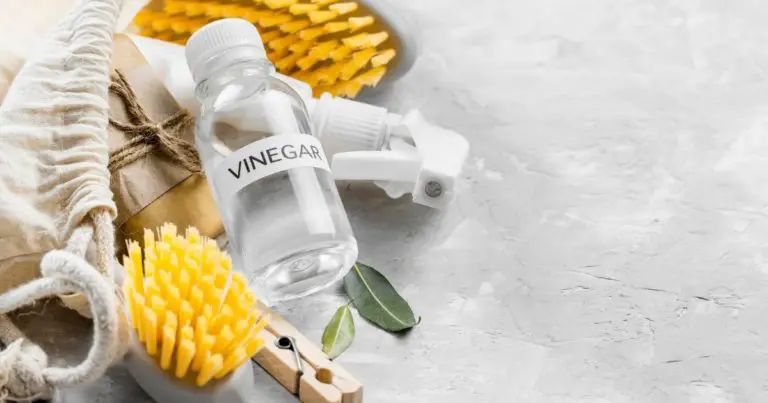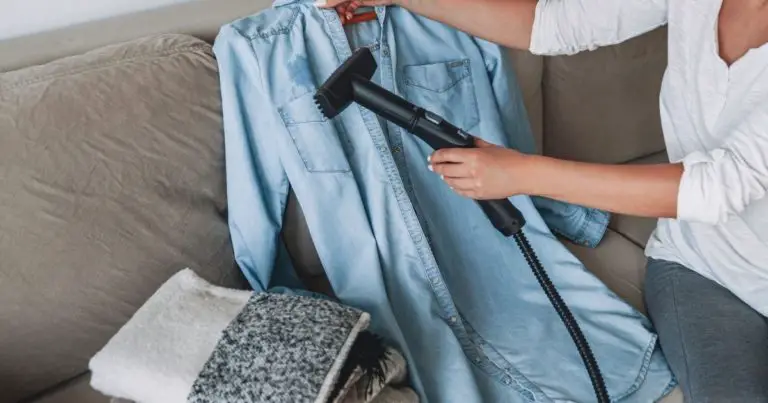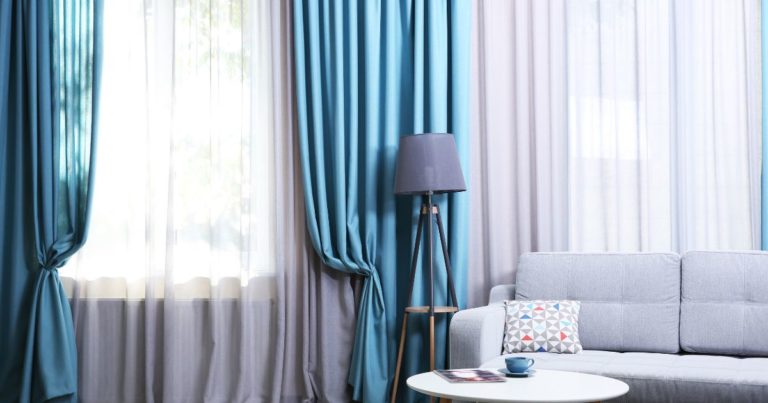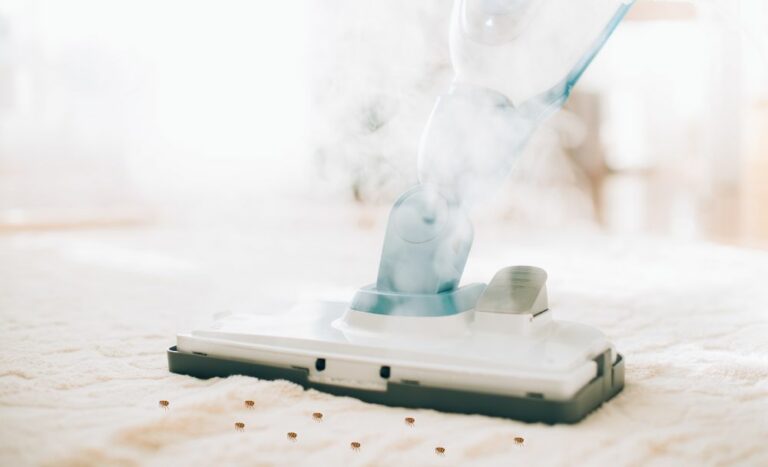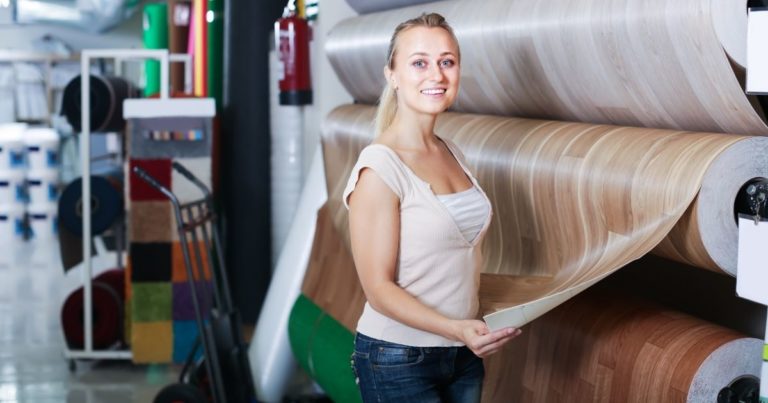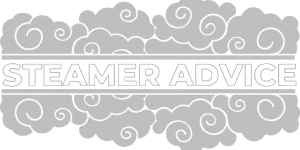Best Way to Clean Laminate Floors – Top Tips for a Streak-Free Finish
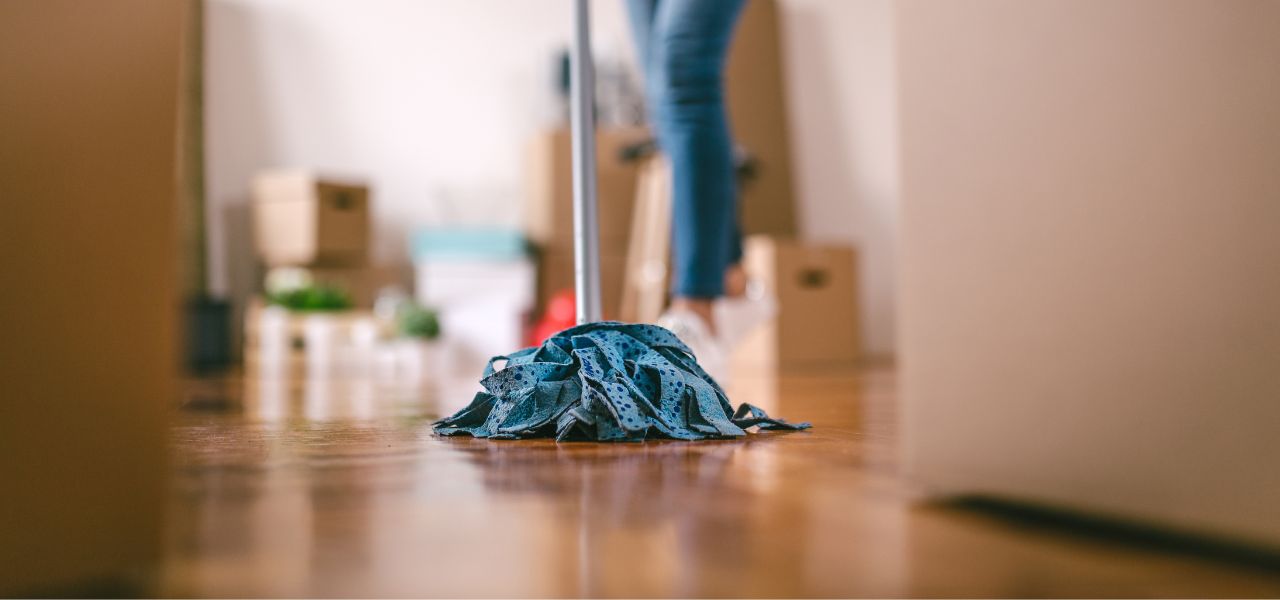
Laminate floors are an incredibly popular choice for many homeowners, offering an attractive and low-maintenance option in flooring. However, it is important to understand the best methods for proper laminate cleaning to ensure your floors remain beautiful.
This article will provide a comprehensive overview of the techniques used to deep clean laminate floors effectively and ensure long-lasting beauty and durability.
Cleaning laminate doesn’t require complex methods or harsh chemicals; follow these steps to learn the best way to clean laminate floors for a streak-free finish.
Types Of Laminate Floors
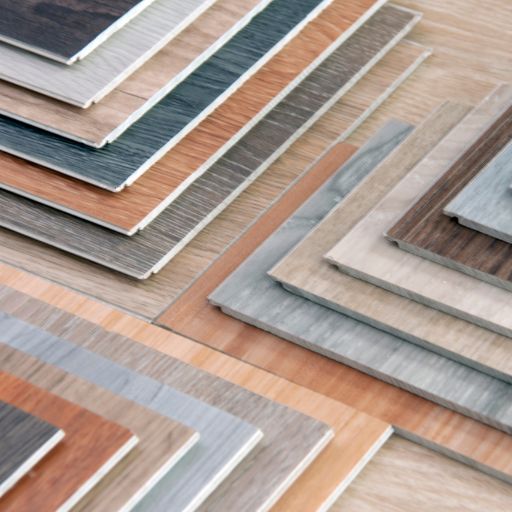
Here are some of the most common types of laminate:
- High-pressure laminate (HPL): HPL is made by fusing multiple layers of paper and resin under high pressure. It is durable and can handle heavy foot traffic.
- Direct pressure laminate (DPL): DPL is made by applying a single layer of paper and resin to a core board. It is less expensive than HPL and is suitable for low to moderate foot traffic.
- Embossed laminate: Embossed has a textured surface that mimics the look and feel of natural materials like wood or stone.
- Smooth laminate: The flooring has a flat, even surface without any texture or grain patterns.
- Hand-scraped laminate: Hand-scraped has a distressed, rustic look that resembles hand-scraped wood.
- Glossy laminate: Glossy has a shiny, reflective surface that can create a sleek, modern look.
- Matte laminate: Matte has a non-reflective surface that can create a more natural, organic look.
Materials Needed For Cleaning
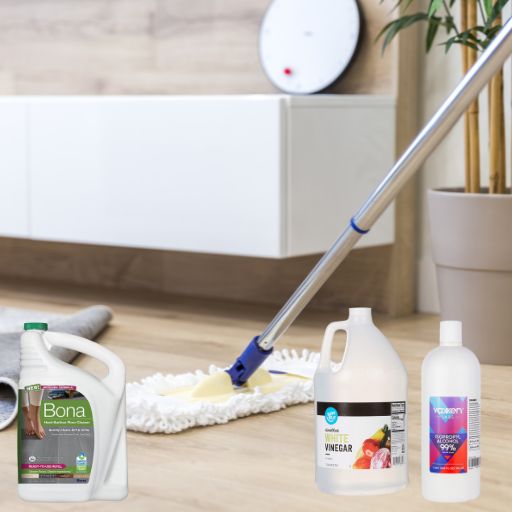
A microfiber mop and cloth are recommended to remove all dirt and dust particles from the floor’s surface. A vacuum cleaner with a soft brush attachment can be used.
If you only have a traditional mop, this may hold too much water for your laminate floor. Try placing a microfiber cloth underneath the mop head for extra absorption.
Here’s what you need to clean your laminate floors the right way:
- Laminate floor cleaner, white vinegar, or rubbing alcohol (if you don’t want to buy a commercially available cleaning product, diluted white vinegar and rubbing alcohol in clean water will give a streak-free finish)
- Warm water in a bucket
- Soft-bristled toothbrush for scuff marks or stains
- Microfiber cloth (or two)
- Microfiber mop or sponge mop
Warm water mixed with a small amount of mild detergent may also be used if there are tough stains on the floor that must be addressed.
It is important not to use too much liquid since it will seep into any cracks or crevices, causing damage to the underlying subfloor material.
These steps will help ensure your laminate floors remain clean, look beautiful, and last longer.
How To Dust
As the saying goes, “A clean home is a happy home.” Dusting laminate floors regularly will help to keep them looking their best and extend their life. A dry mop or vacuum cleaner with a soft brush attachment should be used to remove dirt particles.
If using a vacuum cleaner, ensure it has suction control so that too much air pressure is not applied, which can damage the floor’s surface.
Wet mopping should be avoided as this can cause warping in some types of laminate flooring.
Use felt pads under furniture legs and area rugs at entrances to reduce scratching. This prevents dirt particles from becoming trapped between the furniture and the floor, wearing away at the laminate surface over time.
Mopping Techniques
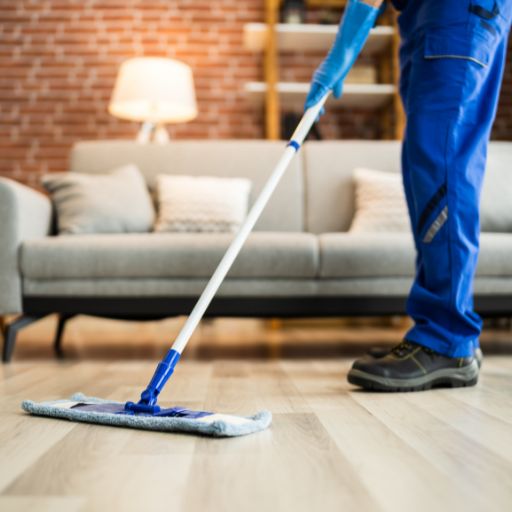
The best way to mop laminate floors is with a microfiber mop and either plain water or a gentle cleaning solution specifically designed for laminate flooring.
It is important not to use too much liquid as this can cause damage by seeping into the seams of the planks and weakening the bond. Instead, dampen the mop and lightly wring out any excess water before using it on the floor.
Start at one corner of the room and work across in straight lines, re-moistening the mop as needed. Dry buff with a clean microfiber cloth after each pass to improve shine.
If you notice the floor getting streaky, it’s time to change your mop pad. Swap it out for a clean one and continue.
Spot Cleaning Solutions
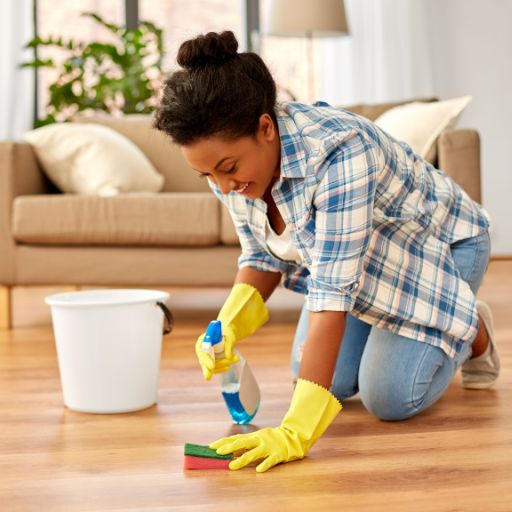
The right cleaning solution is often key to unlocking the best results, and it’s no different when it comes to laminate floors.
One popular option is warm water and white vinegar. This combination has been used as an effective cleaner since ancient times. The acidic qualities of the vinegar act as a natural disinfectant while also helping to break down dirt particles that have built up on the surface of the flooring over time.
To boost your cleaning performance, try using 1 cup of rubbing alcohol per gallon of water. Rubbing alcohol has a fast evaporation rate, which helps to prevent streaks and lines from drying on your floors.
Plus, the bonus of rubbing alcohol is that you don’t need to worry about buffing it dry.
Dish soap can be added to the mix for extra cleaning power for larger spills. Other products, such as baking soda, remove sticky substances like spilled juice or jam but be cautious with baking soda as it is slightly abrasive.
Whatever solution you use, always remember to blot away any excess liquid afterward before drying completely with another towel or cloth.
For dried spills such as candle wax or paint, scrape off as much as possible before using rubbing alcohol to clean away the rest.
Dealing With Stains And Scratches
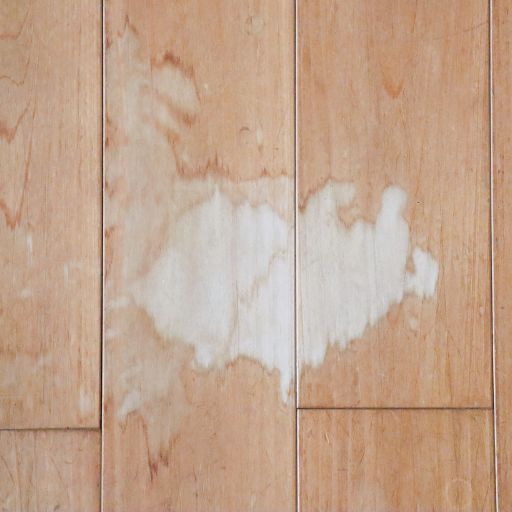
When cleaning laminate, it is important to take extra care when dealing with stains and scratches. Properly addressing these issues will help maintain the floor’s appearance for years. The following steps should be taken:
1. When removing a stain or scratch from a laminate floor, use non-abrasive cleaners and materials such as microfiber cloths and sponges.
2. If necessary, gently scrub the area using an appropriate cleaning agent specifically designed for laminate floors – never use bleach or ammonia products!
3. Dry the area thoroughly after cleaning to prevent water spots or streaks from forming on the surface of the laminate flooring.
4. For deeper scratches, consider applying wood filler to fill in any gaps before refinishing the entire area with a coat of polyurethane sealer.
Best Way to Clean Dog Urine From Laminate Floors
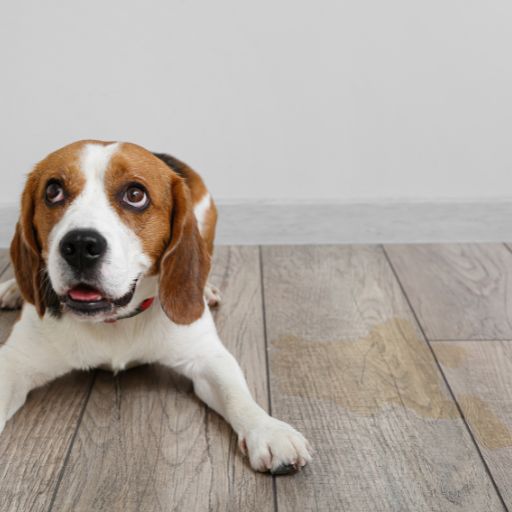
- Wipe up the urine: Use a paper towel or a clean cloth to blot up as much of the urine as possible.
- Use an odor-neutralizing enzyme cleaner safe for laminate floors, such as stink-free spray
- Spray the enzyme neutralizer onto the affected area, and be careful not to let it run into any joins.
- Wipe the area: Wipe the area with a clean, damp cloth or mop to remove the cleaning solution and any remaining urine.
- You might need to repeat this process because you are not leaving the solution to sit on the laminate.
- Dry the area: Use a dry cloth or towel to dry the area thoroughly. Avoid leaving standing water on the laminate flooring, as excess moisture can damage the planks.
Best Way to Clean Dog Hair from Laminate Floors
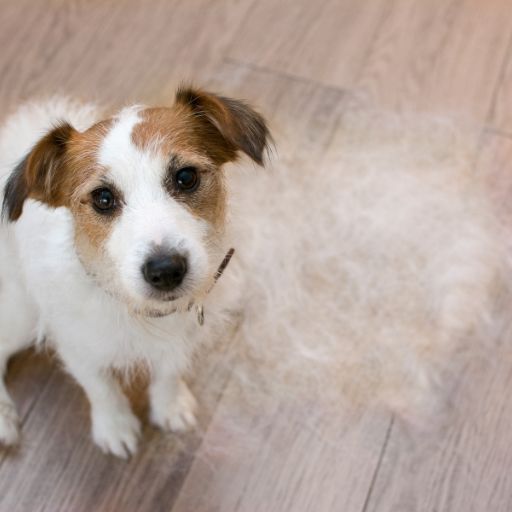
- Sweep or vacuum: Use a broom, dust mop, or vacuum to remove loose dog hair from the floor’s surface. Vacuum with a pet hair attachment to help pick up hair from the crevices.
- Use a microfiber mop: The dog hair will cling to the microfiber. Mop in line with the planks, not across them.
- Use a rubber broom: The rubber bristles can help to pick up hair and dirt without scratching the surface.
- Use a static mop: A static mop, also known as a dust mop, can help to pick up pet hair without scratching the laminate floor. The static charge attracts hair and dust to the mop, making removing it easy.
- Use a lint roller: A lint roller can quickly and easily remove dog hair from laminate floors and can be handy around furniture legs and in tight spaces.
Vacuuming Tips
Vacuuming is an essential part of any floor cleaning. It removes dirt, debris, and allergens that can scratch or become embedded in the surface. Proper vacuuming techniques should be used to ensure the best results:
- Vacuum with a soft-bristled brush attachment set on low suction for the most effective cleaning without scratching the floor.
- Use back-and-forth strokes when vacuuming. Vacuum in line with the grain if you have a woodgrain finish.
- Pay special attention to areas where furniture legs rest, as these spots trap more dust and dirt than other places.
Cleaning Products To Avoid
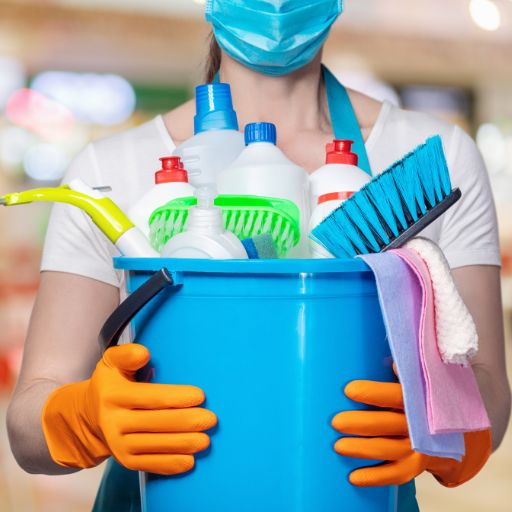
Many commercial cleaning products may seem convenient for removing dirt and grime from laminate floors; these can cause damage if not used properly.
Harsh chemicals such as bleach or ammonia-based cleaners should never be used on laminates; these could harm the protective coating on the surface and cause discoloration and fading.
Abrasive scrubbing pads such as steel wool and scouring powders like bar keepers friend can potentially scratch or dull the finish of your flooring.
Instead, opt for gentler options such as warm water mixed with mild detergent, vinegar solution, or specialized wood cleaner designed for laminate, such as Bona laminate cleaner.
How Often Should Laminate Floors Be Cleaned?
Vacuum or sweep your laminate floors at least once weekly to prevent dust buildup and accumulation of dirt that can scratch the surface if not addressed quickly enough. Regularly mopping with warm water and a mild detergent solution helps maintain its shine and luster without damaging it over time. How often you need to mop will depend on whether you have children or pets, wear shoes in the home etc.
What Type Of Mop Is Best For Cleaning Laminate Floors?
- Microfiber mop: It is the best choice for cleaning laminate floors because it’s gentle and effective. The soft, absorbent fibers trap dirt and debris and won’t damage laminate. Take a look at this Joymoop Microfiber mop and bucket set. O’Cedar makes a great microfiber round mop, also.
- Spray mop: A spray mop is a convenient option for cleaning laminate floors because it allows you to dispense floor cleaner as you go. Most come with a bonus cleaning scraper for the microfiber pads. A must if you have pets.
- Sponge mop: A sponge mop can be a good choice for laminate floors because it’s gentle and can absorb water. However, avoiding too much water on laminate floors is important, as excess moisture can cause damage.
- A caution on steam mops: While steam mops can be effective for cleaning some types of flooring, they are not recommended for use on laminate floors. The high-heat steam can prematurely break down the coatings on your laminate boards. If you want to use a steam mop, read my guide to steam mopping laminate safely.
Is It Safe To Use A Steam Cleaner On Laminate Floors?
Most laminate flooring manufacturers advise it is against their warranty to use a steam cleaner on laminate. Some newer laminates are steam mop friendly. It is best to check with the manufacturer for specific advice.
The risk with using a steam cleaner is the high heat can strip away the surface of the laminate, causing premature damage.
How Can I Protect My Laminate Floors From Future Damage?
Aside from regular cleaning, consider using area rugs and door mats to collect dust and dirt, particularly in high-traffic areas. If you have pets, trim their nails to avoid scratching the laminate. Take your shoes off inside the home.
- Can You Use a Steam Mop On Karndean Flooring? - June 19, 2024
- How To Clean Unsealed Concrete Floors - June 7, 2024
- How to Clean Stamped Concrete - June 7, 2024

